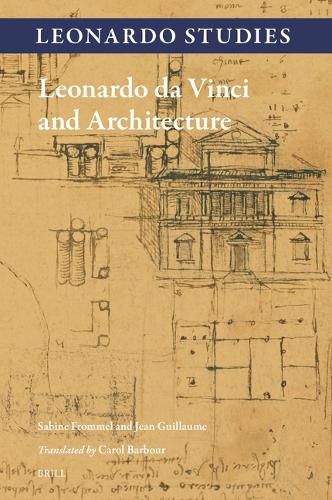Readings Newsletter
Become a Readings Member to make your shopping experience even easier.
Sign in or sign up for free!
You’re not far away from qualifying for FREE standard shipping within Australia
You’ve qualified for FREE standard shipping within Australia
The cart is loading…






Found scattered among his numerous manuscripts, Leonardo's studies on architecture were conceived during an artistic journey of close to fifty years while their author was in the service of the most prestigious patrons. Dealing with churches, ephemeral monuments, urban reconstruction, fortifications, palaces and villas, and painted architecture-mostly ideal in nature-they are part of the architectural evolution of the late quattrocento and early cinquecento. Leonardo's drawings assimilate the ideas of the pioneers of Renaissance architecture and focus on particular aspects, such as interventions on existing structures, classical orders, staircases, and decoration. Leonardo's analysis sheds light on dialogues with Bramante, Francesco di Giorgio, Giuliano da Sangallo, Michelangelo, Baldassare Peruzzi and Antonio da Sangallo the Younger and allows us to better understand whether his contributions were innovative, or singular interpretations of the achievements of his time.
This is an augmented translation of Leonardo e l'architettura (Modena: Franco Cosimo Panini, 2019)
$9.00 standard shipping within Australia
FREE standard shipping within Australia for orders over $100.00
Express & International shipping calculated at checkout
Found scattered among his numerous manuscripts, Leonardo's studies on architecture were conceived during an artistic journey of close to fifty years while their author was in the service of the most prestigious patrons. Dealing with churches, ephemeral monuments, urban reconstruction, fortifications, palaces and villas, and painted architecture-mostly ideal in nature-they are part of the architectural evolution of the late quattrocento and early cinquecento. Leonardo's drawings assimilate the ideas of the pioneers of Renaissance architecture and focus on particular aspects, such as interventions on existing structures, classical orders, staircases, and decoration. Leonardo's analysis sheds light on dialogues with Bramante, Francesco di Giorgio, Giuliano da Sangallo, Michelangelo, Baldassare Peruzzi and Antonio da Sangallo the Younger and allows us to better understand whether his contributions were innovative, or singular interpretations of the achievements of his time.
This is an augmented translation of Leonardo e l'architettura (Modena: Franco Cosimo Panini, 2019)